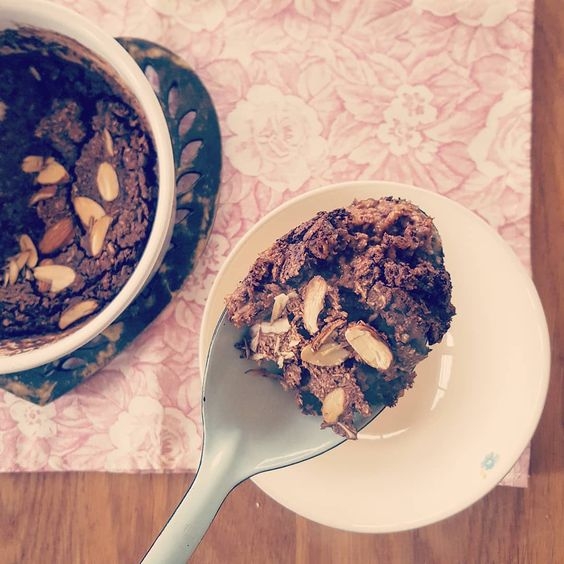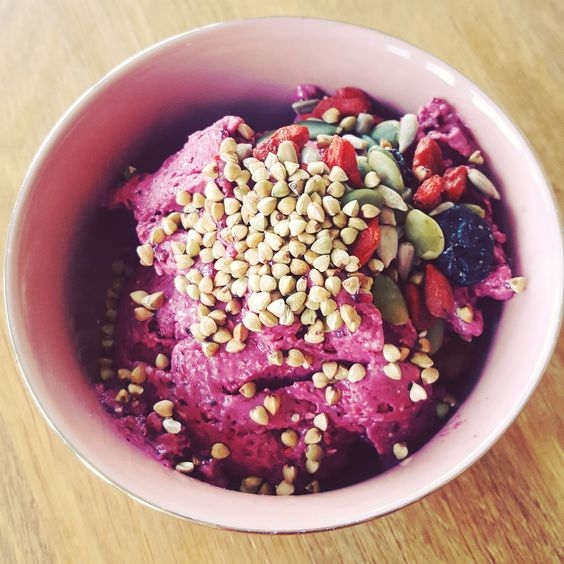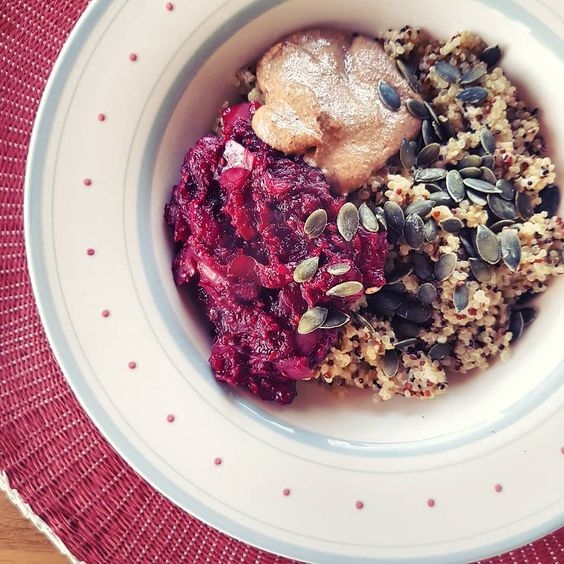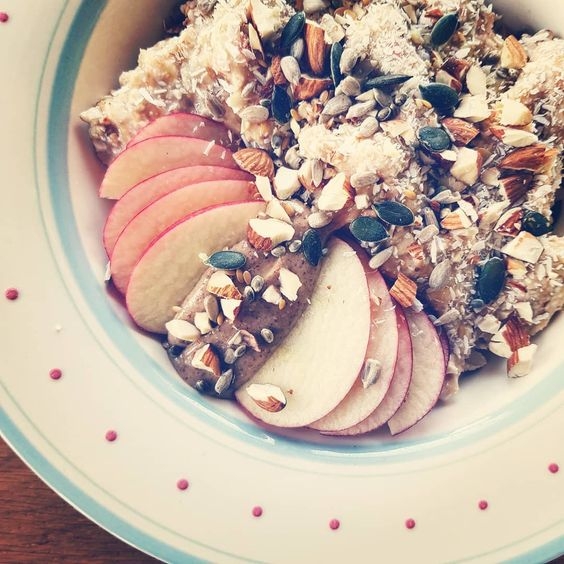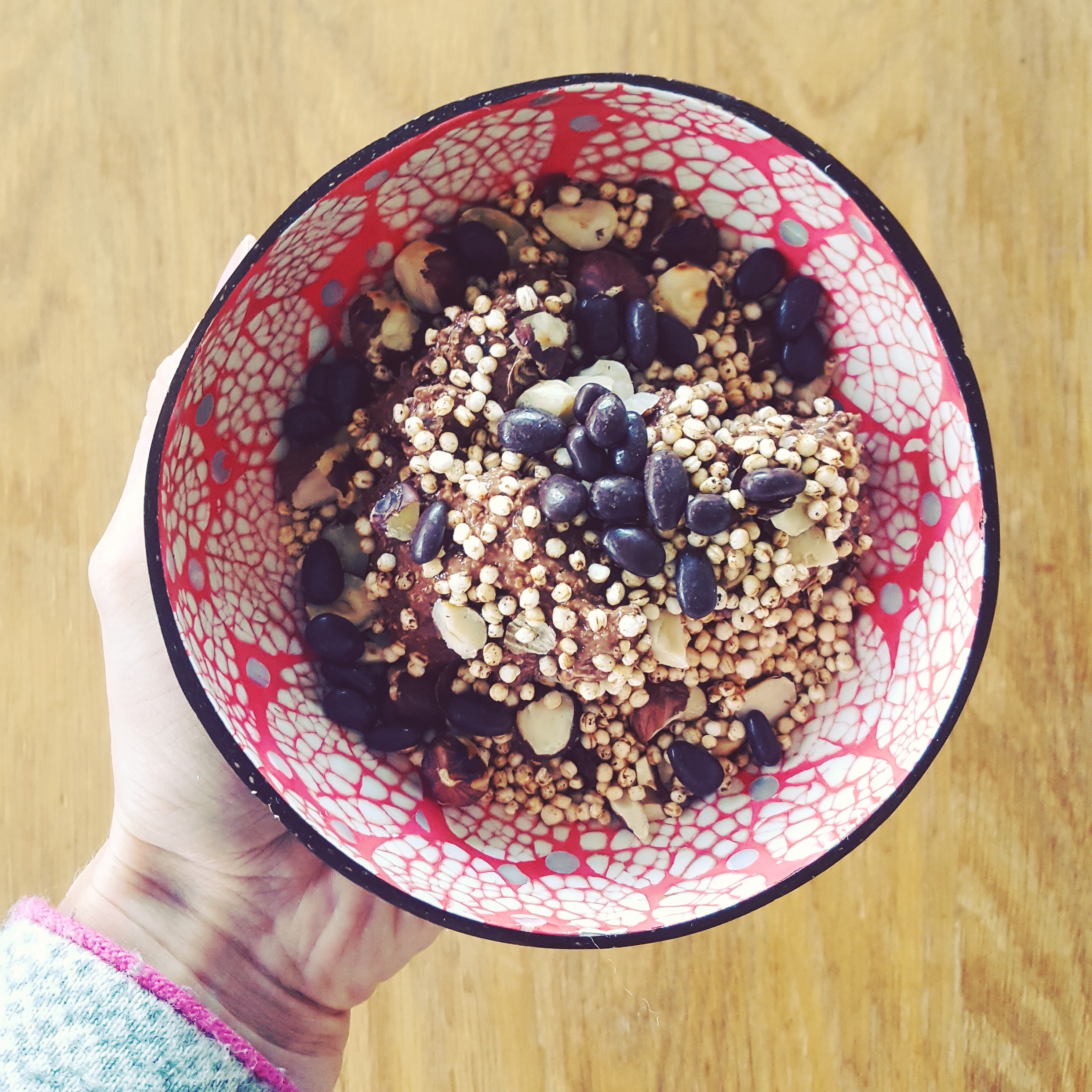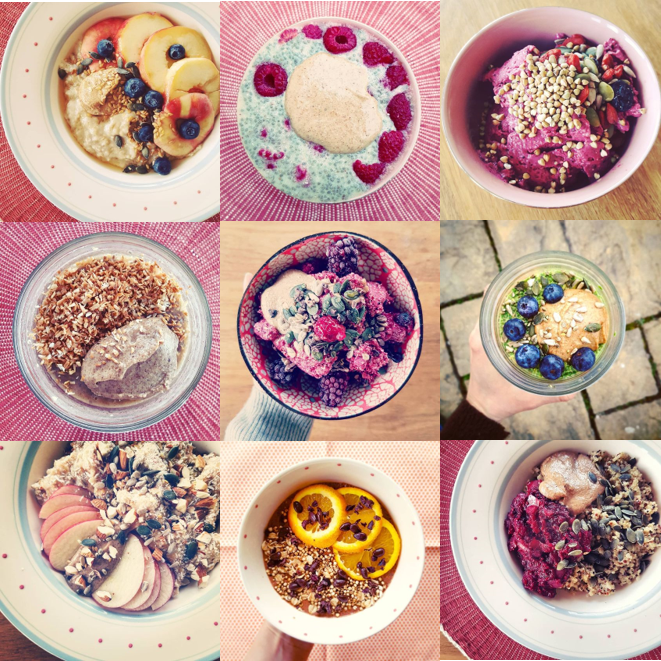 What first springs to mind when you think about breakfast? Over the years following the invention of breakfast cereal in America in the mid 19th century people have been turning to their stash of beloved boxes of various colours and sizes, usually housed in a particular kitchen cupboard, to provide their first meal of the day. These boxes of cereal certainly serve a purpose; being able to rapidly serve oneself breakfast, eat, then leave the house, is all too often a necessity of modern life. From the busy single professional to the family always in a rush, to the retired couple, to the most elderly members of society, breakfast cereal provides a solution to the problem of deciding what to have for breakfast (huge choice of available breakfast cereals aside), and allows people to get on with their day, almost not even noticing that they’ve just eaten a meal. Yes. A meal. Because that’s what breakfast is; the first meal of the day. Incredibly, the catchphrase “breakfast is the most important meal of the day” was actually coined by a cereal company, again in the US, as part of an advertising campaign to sell more of a cereal called Grape Nuts. This phrase has since become a common expression, and although its derivation is somewhat disappointing, from a common sense point of view, it is surely worth further consideration.
What first springs to mind when you think about breakfast? Over the years following the invention of breakfast cereal in America in the mid 19th century people have been turning to their stash of beloved boxes of various colours and sizes, usually housed in a particular kitchen cupboard, to provide their first meal of the day. These boxes of cereal certainly serve a purpose; being able to rapidly serve oneself breakfast, eat, then leave the house, is all too often a necessity of modern life. From the busy single professional to the family always in a rush, to the retired couple, to the most elderly members of society, breakfast cereal provides a solution to the problem of deciding what to have for breakfast (huge choice of available breakfast cereals aside), and allows people to get on with their day, almost not even noticing that they’ve just eaten a meal. Yes. A meal. Because that’s what breakfast is; the first meal of the day. Incredibly, the catchphrase “breakfast is the most important meal of the day” was actually coined by a cereal company, again in the US, as part of an advertising campaign to sell more of a cereal called Grape Nuts. This phrase has since become a common expression, and although its derivation is somewhat disappointing, from a common sense point of view, it is surely worth further consideration.
Have you ever considered why breakfast cereals are “fortified with vitamins and iron”? It’s because during the production process, the components of the grains which provide nourishment to the body are removed or broken down, so the manufacturers are required to fortify the cereals to restore or increase their nutritional value. Now by no means is every cereal which comes from a box devoid of nutritional value, but suffice it to say, the less additional ingredients alongside the grain the better, and cereals in which the wholegrain remains are nutritionally superior. Porridge oats are the perfect example of this. Unbelievably, Quaker porridge oats was one of the original breakfast cereal brands and even the types of oats available to buy vary in terms of how they’ve been processed; from steel-cut to jumbo rolled to quick-cook oats, there is still a variety in this seemingly most unadulterated of cereals. Thankfully though, this processing of the oat does not diminish its nutritional value and since oats are a valuable source of energy, fibre and minerals that is a relief.
You may have noticed that the title of this article becomes a little contradictory in this light. Of course, there are plenty of nutritious ingredients that come in boxes, as well as a plethora of other assorted packaging. The idea of Breakfast Outside the Box is to encourage people to think outside the typical box of cereal, poured into a bowl with a splash of milk, and also to think outside the box of what breakfast is and has the potential to provide.
Going back to our catchphrase of breakfast being the most important meal of the day, it is therefore arguably the ideal time to fill our bodies with as many nutrients from as wide a range of sources as possible, and thinking outside the box really helps us to be creative with these sources. We are going to concentrate here on a plant-based approach which provides a variety of nutrients, particularly from fruit, vegetables, grains and seeds. It can be really helpful to put types of food into categories simply in your head, so that when you are planning your breakfast you can do a quick check to make sure you’ve included foods from as many sources as possible. Toppings come in handy here, because many highly nutritious foods are only needed in relatively small portions in order to have a positive impact on one’s health, for example, nuts and seeds.
Here is a by-no-means-exhaustive list of the types of foods you would benefit from including in your breakfast.
- Fresh fruit
- Frozen fruit including banana
- Dried fruit
- Any type of vegetable
- Grains and grain-like seeds and pulses
- Oats
- Seeds eg sunflower, chia, linseed, pumpkin
- Nuts eg. Almonds, hazelnuts, Brazil nuts, cashews
- Plant-based milk eg. Almond, soya and coconut milk from a carton
- Natural sweeteners eg. Honey, maple syrup, date syrup, agave nectar
- Nut butter such as almond butter, hazelnut butter and cashew butter
To begin our breakfast innovation, let’s revisit the humble oat. As previously mentioned, there are a few available options of oat, depending on how they’ve been processed. On the whole, jumbo rolled oats are the best all-rounder, standing up to a diversity of preparation methods, and should be a staple for all breakfast enthusiasts! Four entirely different ways of preparing jumbo rolled oats are:
1) Overnight oats, where oats are mixed with perhaps a teaspoon of spice such as cinnamon, some fruit (frozen, fresh or dried are all suitable), some plant-based milk, and a dash of sweetener such as honey or maple syrup. The mixture is left in a lidded pot in the fridge overnight then in the morning can be eaten as it is, ideal for on the run, or can be added to with a variety of toppings including nut butter, seeds and desiccated coconut.
2) Baked porridge, where oats are mixed with perhaps fruit, plant-based milk, cacao and sweetener, topped with chopped nuts, and baked for around 30 minutes until golden and bubbling. This is ideal for using up fruit which is beyond its peak, especially stone fruits such as peaches, plums and nectarines, which can be sliced and mixed in. They will bring a beautiful, natural sweetness to the meal whilst helping to use up food which is close to perishing. The taste of baked porridge with sliced peaches or apricots is reminiscent of a fruit crumble when baked so the fruit bubbles and caramelizes!
3) Old-fashioned porridge, cooked the traditional way in water, with a little plant-based milk mixed in when almost ready. The toppings are limitless; fresh fruit is incredible on hot porridge, even some freshly sliced galia melon is the perfect compliment. Add your natural sweetener of choice, a little almond butter, some seeds or toasted chopped nuts, and you have a bowl crammed with energy, vitamins and nutrients which will set you up perfectly to start the day.
4) Adding raw oats to frozen banana and a little honey and blitzing together in a food processor creates an incredible food known as nice-cream or banana ice-cream. Oats aren’t always added, but they provide a robust texture and create a fantastic flavour when blitzed with the banana. Again, the toppings which can be added are only limited by the imagination. As an aside, an excellent way to use up spare bananas is to freeze them, either in their skin, or chopped into slices of about one centimetre. When frozen in their skin they can be defrosted and added to cakes such as banana bread. When sliced and frozen, they can be used in infinite ways as a base for the above-mentioned nice-cream. Simply remove from the freezer 15 minutes before you want to eat to allow them to lose the solidity of being completely frozen, then pop in a food processor with any type of frozen fruit you fancy, a little sweetener if you like although it’s not absolutely necessary, and, if you like, some type of grain. You then blitz the mixture until all the ingredients clump together and form a lovely, ice-cream-resembling clump, which you can serve into a bowl and sprinkle with your choice of healthy toppings.



